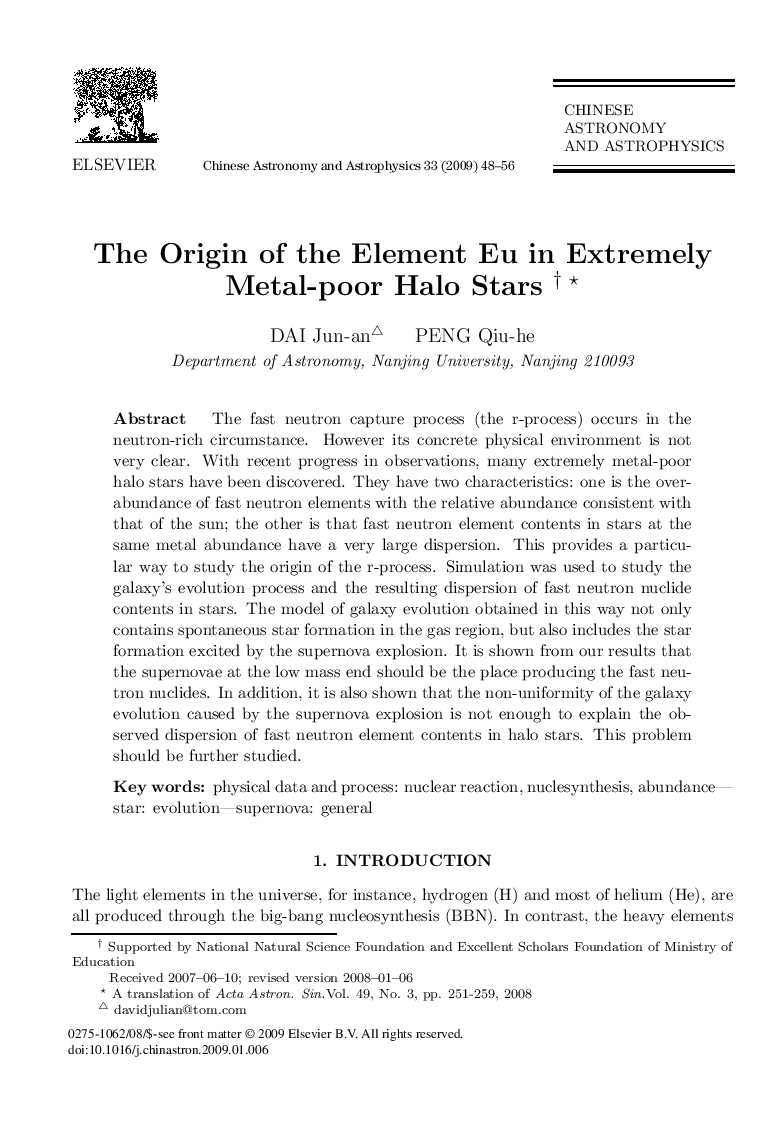| Article ID | Journal | Published Year | Pages | File Type |
|---|---|---|---|---|
| 1772104 | Chinese Astronomy and Astrophysics | 2009 | 9 Pages |
The fast neutron capture process (the r-process) occurs in the neutron-rich circumstance. However its concrete physical environment is not very clear. With recent progress in observations, many extremely metal-poor halo stars have been discovered. They have two characteristics: one is the overabundance of fast neutron elements with the relative abundance consistent with that of the sun; the other is that fast neutron element contents in stars at the same metal abundance have a very large dispersion. This provides a particular way to study the origin of the r-process. Simulation was used to study the galaxy's evolution process and the resulting dispersion of fast neutron nuclide contents in stars. The model of galaxy evolution obtained in this way not only contains spontaneous star formation in the gas region, but also includes the star formation excited by the supernova explosion. It is shown from our results that the supernovae at the low mass end should be the place producing the fast neutron nuclides. In addition, it is also shown that the non-uniformity of the galaxy evolution caused by the supernova explosion is not enough to explain the observed dispersion of fast neutron element contents in halo stars. This problem should be further studied.
